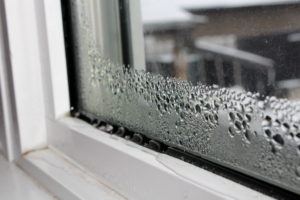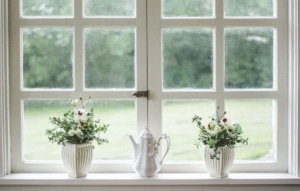Learn How to Paint Tile Floors (2023 Guide)
Learning how to paint tile floors can be a great way to update the look of your home without the expense of a complete renovation. Not only is it a cost-effective solution, but it also allows you to customize the appearance of your tile to match your personal style and home decor. Painting tile floors can be a bit more challenging than painting walls or other surfaces.
This is because tile is a porous material that can be difficult to paint, and it requires a certain level of preparation and the use of specific products to ensure that the paint will adhere properly and last for a long time. This guide will walk you through the process of painting tile floors, from preparing the surface to applying the paint and sealing it for added protection.
The following supplies are needed to paint tile floors:
- Cleaner: A mild detergent or degreaser to clean the tile surfaces.
- Epoxy filler: to fill in any cracks or chips in the tile.
- Sandpaper: to create a rough surface for the paint to adhere to.
- Paint roller and/or paintbrush: to apply the paint.
- Tile paint: it is recommended to use paint specifically made for tile floors, as it is more durable and resistant to wear and tear.
- Stencil (if using one): Choose a stencil that is suitable for the surface you will be stenciling and the type of paint you will be using.
- Clear sealer: to protect the paint and make it more durable.
- Painters tape or stencil adhesive: to secure the stencil in place.
- Stencil brush or roller: to apply the paint within the stencil.
- Drop cloths or plastic sheeting: to protect the surrounding areas from paint splatters.
- Respirator mask: to avoid inhaling fumes.
Steps on How To Paint Tile Floors
Preparing the Surface
The first step in painting tile floors is to prepare the surface. This means cleaning the tile thoroughly to remove any dirt, grime, or debris. Use a mild detergent and warm water to clean the tile, and be sure to rinse it thoroughly to remove any residue. Once the tile is clean, fill in any cracks or chips in the tile with epoxy filler. This will ensure that the paint has a smooth surface to adhere to. Once the filler is dry, sand the surface of the tile lightly to create a rough surface for the paint to adhere to.
Applying A Primer
After the surface is prepared, the next step is to apply a coat of tile primer. This will help the paint adhere better and last longer. Use a paint roller or brush to apply the primer, and be sure to work in small sections so that the primer can dry completely before moving on to the next section. Allow the primer to dry completely before moving on to the next step.
Painting the Tile
Once the primer is dry, it is time to paint the tile. Use a paint roller or brush to apply a coat of tile paint to the surface of the tile. Be sure to work in small sections and use a paintbrush to touch up any areas that may have been missed with the roller. Allow the first coat of paint to dry completely before applying a second coat, if necessary. Keep in mind that it’s better to use paint specifically made for tile floors, as it is more durable and resistant to wear and tear. Also, it is recommended to apply the paint in a well-ventilated area and to use a respirator mask to avoid inhaling fumes.
Sealing the Paint
Once the paint is dry, apply a clear sealer to protect the paint and make it more durable. Allow the sealer to dry completely before using the tile. This will ensure that the paint stays in place and doesn’t chip or peel.
Final Step
Allow the tile to dry completely before moving furniture back into the room, or walking on the tile. This will ensure that the paint has time to cure and will be more durable.
How to paint tile floors with a stencil
If you want to be a little fancy or give a unique design to your floors you can use a stencil to paint tile floors. Using a stencil can add a unique, decorative touch to your tile floors and can be a great way to update the look of your home.
- Adhesive stencils: These are stencils that come with a self-adhesive backing, making it easy to apply and position on the tile. They can be used multiple times and are easy to clean.
- Reusable stencils: These are stencils that are made of a durable material such as plastic or Mylar, and can be used multiple times. They are easy to clean and can be used with a variety of paints.
- Disposable stencils: These are stencils that are made of a thin, flexible material such as paper or vinyl and are intended for one-time use. They are less expensive than reusable stencils but are less durable and may not produce as sharp results.
- Custom stencils: These are stencils that are designed to your specifications. They can be made of adhesive vinyl, Mylar or other materials, and can be made to any size or shape. They are great for creating unique designs or logos.
- Repeat pattern stencils: These are stencils that have a repeating pattern and can be used to cover large areas. They are great for creating a geometric or repeating design.
Types of Paint to Paint Tile Floors
There are several top brands of floor paint that are known for their quality and durability. Some of these include:
- Behr: Behr is a well-known brand of paint that offers a variety of options for floor painting, including epoxy paint for garage floors and porch and patio paint for outdoor surfaces.
- Rust-Oleum: Rust-Oleum is another popular brand that offers a wide range of floor paints, including epoxy paint for garage floors and porch and patio paint for outdoor surfaces.
- KILZ: KILZ is a brand known for producing high-quality paint products, including floor paints for concrete and wood surfaces. They have specific products for tile floors as well.
- Drylok: Drylok is a brand that specializes in masonry and concrete products, including floor paints and sealers. They have a wide range of products designed for use on concrete, brick, and other masonry surfaces.
- Porch and Floor Enamel: Many brands like Sherwin Williams, Benjamin Moore and PPG Paints offer porch and floor enamel, which is a type of paint specifically designed for use on porch and patio surfaces. This type of paint is often more durable and resistant to wear and tear than regular interior paint.
It is always recommended to check the product specifications and check if it is suitable for your flooring type and the area it will be applied to. It is also a good idea to read customer reviews or ask for professional advice before purchasing a floor paint.
Conclusion: How To Paint Tile Floors
Note: If you are considering painting your tile black, ensure you do great prep work and seal them well. Black is a color that shows defects easily so I would recommend a more friendly color.
Learning how to paint tile floors can be a great way to update the look of your home without breaking the bank. But it requires a certain level of preparation and the use of specific products to ensure that the paint will adhere properly and last for a long time. By following the steps outlined above, you can successfully paint your tile floors and enjoy a fresh, updated look for years to come.
3 Other Painting Tile Ideas
- Painting tile countertops
- Painting tile backsplash
-
Painting over bathroom tile





